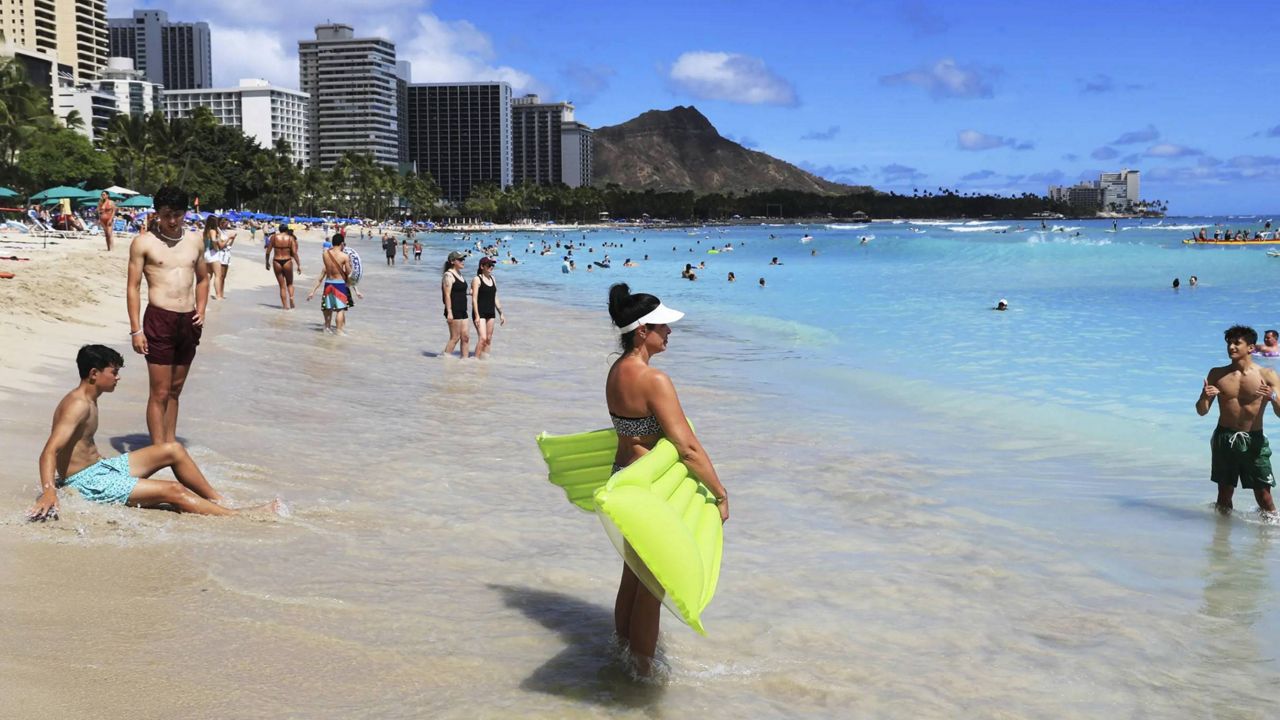The Trump administration’s aggressive shift in federal policies has set Hawaii on a course toward recession, according to a new economic forecast released on Friday by the University of Hawaii Economic Research Organization.
“Hawaii’s economic outlook has taken a decisive turn for the worse, as expansive federal policy shifts look poised to tip the local economy into a mild recession,” the report stated. “Sharp increases in U.S. import tariffs, sweeping federal layoffs, and volatile fiscal and immigration policies are undermining consumer confidence, raising inflation expectations, and worsening the business outlook — both nationally and in Hawaii’s visitor-dependent economy.”
The recession would be the first in Hawaii since the pandemic, according to "Federal Policies Push Hawaii Toward Mild Recession."
According to the authors, the administration’s universal 10% tariff and 145% levies on some Chinese goods have destabilized U.S. markets, causing equity indices to plunge.
"Because of the inflationary impact of tariffs, the Federal Reserve is likely to delay interest rate cuts, barring a marked economic slowdown,” the report stated. U.S. GDP is now forecast to grow less than 1% this year, while global growth projections have been revised downward across most economies, including in the key visitor markets of Canada and Japan.
President Donald Trump has said that there is a trade deficit between the U.S. and other countries and that tariffs will help undo that trade imbalace. In his Executive Order 14257, "Regulating Imports with a Reciprocal Tariff to Rectify Trade Practices that Contribute to Large and Persistent Annual United States Goods Trade Deficits," dated April 2, he wrote, "Large and persistent annual U.S. goods trade deficits are caused in substantial part by a lack of reciprocity in our bilateral trade relationships. This situation is evidenced by disparate tariff rates and non-tariff barriers that make it harder for U.S. manufacturers to sell their products in foreign markets." Trump called the trade deficit a "national emergency," that the EO would address.
Ripples from the administration’s policies could negatively affect the state on several fronts, despite an otherwise positive start to the year, UHERO forecast.
On the tourism front, international arrivals are down 3% to 6%, with double-digit declines in airlift from Japan and Canada.
“A soft booking trend and still-weak currencies suggest a deepening slump in international travel,” according to the report. “Domestically, economic uncertainty and higher costs are expected to dampen demand. Total visitor arrivals are now projected to decline by 4% over the next two years, with a $1.6 billion reduction in real visitor spending by 2026. All counties will see declines in visitor-related employment.”
The report projected that a full recovery of visitor arrivals would not occur until 2028. Federal layoffs will also impact the local labor market and inflation, according to UHERO.
The report forecasts a nearly 1% contraction in employment for 2026, with the biggest losses in public sector and visitor-related jobs. Federal spending cuts could reduce Hawaii’s federal workforce by 2,300 civilian positions and hurt local government and nonprofit programs dependent on federal funding. Tariffs will also drive inflation, with the Honolulu Consumer Price Index expected to exceed 4% over the next two years.
While public infrastructure and Maui rebuilding projects continue to prop up the construction sector, labor constraints and tariffs on imported materials will affect future activity, UHERO predicted. Construction employment is expected to gradually decline by 2027.
Meanwhile, housing prices remain elevated with median single-family home prices continuing to rise and the condominium market, especially on Maui, stagnating due to the ongoing insurance crisis and potential regulatory changes, the report stated.
Overall, UHERO predicts limited Gross Domestic Product growth for the rest of 2025 and contraction in 2026.
“Recovery will be slow, with real income growth remaining below 1% until 2028,” the report stated. “Risks remain exceptionally large; sustained tariffs, delayed policy reversals, and global backlash to US actions could deepen the downturn. While fiscal stimulus and currency shifts may offer partial relief, uncertainty, fragility and broad-based economic stress marks the near-term outlook.”
The researchers stressed that the extreme uncertainty of the current situation makes it difficult to decisively forecast U.S. and global economies and that it is possible that things won’t be as grim as predicted.
The bedrock of the U.S. economy — its consumers — have proven much more resilient than many expected, considering the decline in built-up savings and labor market softening,” the report stated. “And American businesses, while clearly shaken by tariffs and shifting policy sands, may become more willing to make investment commitments if bilateral trade deals result in much smaller actual tariff increases than feared, and if the overall policy environment settles. In this case, there would be smaller inflationary effects, which would free the Fed’s hand in providing any needed stimulus. The economic position of both consumers and businesses may be improved if supportive federal budget measures are enacted.”
Michael Tsai covers local and state politics for Spectrum News Hawaii. He can be reached at michael.tsai@charter.com.




